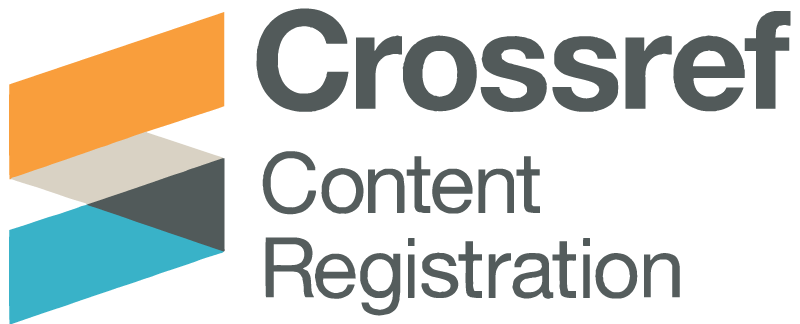تقييم العلاقة بين ممارسات إدارة الجودة الشاملة والأداء التنظيمي في شركات التصنيع الليبية
DOI:
https://doi.org/10.59743/jau.v9i1.2005الكلمات المفتاحية:
الشركات الصناعية، الأداء التنظيمي، إدارة الجودة الشاملةالملخص
في المشهد المعاصر، ينبغي على شركات التصنيع أن تعمل بنشاط على تنمية قدرتها التنافسية وإظهار قدرتها على الحفاظ على ميزة تنافسية قوية. والعاملان الرئيسيان في هذا المسعى هما الأداء التنظيمي وتطبيق إدارة الجودة الشاملة، وهما عاملان معترف بهما على نطاق واسع كمتغيرين حاسمين في قطاع التصنيع. تستخدم هذه الدراسة منهجاً شاملاً، باستخدام التحليل الوصفي باستخدام الحزمة الإحصائية للعلوم الاجتماعية (SPSS) ونمذجة المعادلات الهيكلية (SEM) باستخدام نهج المربعات الصغرى الجزئية (PLS) الإصدار 3.0. ويتميز هذا النهج بقدرته على تمثيل المفاهيم غير الملحوظة في العلاقات، ومراعاة أخطاء القياس في عملية التقدير، والتحقق من صحة النموذج المفترض، ويضيف هذا النهج دقة إلى التحقيق. ينصب التركيز الأساسي لهذا البحث على تقييم العلاقة بين تطبيق إدارة الجودة الشاملة عبر مجموعة من الشركات، بما في ذلك الشركات التي لديها برامج رسمية لإدارة الجودة الشاملة وتلك التي تدمج ممارسات إدارة الجودة الشاملة. وقد تم استخدام استبيانات مصممة بدقة لجمع البيانات، وتم توزيعها على مختلف الموظفين، بما في ذلك مديري الجودة الشاملة، والمشرفين، ومساعدي الجودة، ومديري الرقابة، والمديرين العامين، ومديري الإنتاج ومديري الإدارة العليا، والأفراد الذين يمتلكون خبرات ذات صلة بالجودة. تهدف الدراسة من خلال الاختبار الدقيق للفرضيات إلى تحديد العلاقة بين إدارة الجودة الشاملة والأداء التنظيمي. وتكشف النتائج عن وجود علاقة إيجابية بين إدارة الجودة الشاملة والأداء التنظيمي في شركات التصنيع في ليبيا. ومن المتوقع أن تكون نتائج هذه الدراسة بمثابة رؤى وتوجيهات قيّمة للمدراء والممارسين في مجال التصنيع في ليبيا، مما يعزز التحسينات في الأداء التنظيمي من خلال التطبيق الفعال لإدارة الجودة الشاملة
التنزيلات
المراجع
Stock, T. and G. Seliger, Opportunities of sustainable manufacturing in industry 4.0. procedia CIRP, 2016. 40: p. 536-541. DOI: https://doi.org/10.1016/j.procir.2016.01.129
Androniceanu, A., The three-dimensional approach of Total Quality Management, an essential strategic option for business excellence. Amfiteatru Economic, 2017. 19(44): p. 61-78.
Al-Mijrab, A.S.A., An investigation into the difficulties affecting the adoption of ISO 9000, a quality management system, in Libyan Service and manufacturing industries. 2011: University of Northumbria at Newcastle (United Kingdom).
Abusa, F., TQM implementation and its impact on organisational performance in developing countries: a case study on Libya. 2011.
Al-Dhaafri, H.S., A.K. Al-Swidi, and R.Z.B. Yusoff, The mediating role of TQM and organizational excellence, and the moderating effect of entrepreneurial organizational culture on the relationship between ERP and organizational performance. The TQM Journal, 2016. 28(6): p. 991-1011. DOI: https://doi.org/10.1108/TQM-04-2014-0040
Oza, H. and D. Shiroya, Identification of TQM practices from empirical studies by Pareto analysis. Asian Journal of Multidisciplinary Studies, 2015. 3(10): p. 116-124.
Nicholas, J., Hoshin kanri and critical success factors in quality management and lean production. Total Quality Management & Business Excellence, 2016. 27(3-4): p. 250-264. DOI: https://doi.org/10.1080/14783363.2014.976938
Mahmood, S., F. Qadeer, and A. Ahmed, The role of organizational learning in understanding relationship between total quality management and organizational performance. Pakistan Journal of Commerce and Social Sciences, 2015. 9(1): p. 282-302.
Ahmad, M., et al., Review of relationship between TQM and business performance. Applied Mechanics and Materials, 2013. 315: p. 166-170. DOI: https://doi.org/10.4028/www.scientific.net/AMM.315.166
Mangula, M.S. and D. Karugira, Effect of quality management systems (ISO 9001) certification on organizational performance in Tanzania: a case of manufacturing industries in morogoro. International Journal of Technology enhancements and emerging engineering research, 2013. 1(1): p. 14-19.
Alsaidi, A., Benefits of Total Quality Management in mechanical working in oil companies in Libya. International Journal of Engineering Research and Social Technology, 2014. 3(4): p. 241-247.
Zwet, A., Total quality management: A framework for quality improvement in Arab manufacturing companies. 2017, University of East London.
Doran, J. and G. Ryan, The importance of the diverse drivers and types of environmental innovation for firm performance. Business strategy and the environment, 2016. 25(2): p. 102-119. DOI: https://doi.org/10.1002/bse.1860
Mann, R., M. Mohammad, and M.T.A. Agustin, An awareness guidebook for SMEs. 2012.
Dahlgaard, J.J., et al., Business excellence models: Limitations, reflections and further development. Total Quality Management & Business Excellence, 2013. 24(5-6): p. 519-538. DOI: https://doi.org/10.1080/14783363.2012.756745
Framework, B.P.E., 2018 Baldrige Excellence Framework: A systems approach to improving your organization’s performance. Retrieved January, 2017. 5: p. 2017.
Ross, J.E., Total quality management: Text, cases, and readings. 2017: Routledge.
Carpenter, M.A., et al., Principles of management. 2010: Flatworld Knowledge.
Bright, D.S., Principles of management. 2019: OpenStax College.
Valmohammadi, C., Investigating innovation management practices in Iranian organizations. Innovation, 2012. 14(2): p. 247-255. DOI: https://doi.org/10.5172/impp.2012.14.2.247
Bahri, S., D. Hamzah, and R.M. Yusuf, Implementation of total quality management and its effect on organizational performance of manufacturing industries through organizational culture in South Sulawesi, Indonesia. Journal of Business and Management, 2012. 5(1): p. 10-24. DOI: https://doi.org/10.9790/487X-0511024
Martínez-Costa, M., et al., ISO 9000/1994, ISO 9001/2000 and TQM: The performance debate revisited. Journal of operations management, 2009. 27(6): p. 495-511. DOI: https://doi.org/10.1016/j.jom.2009.04.002
Talavera, M.G.V., TQM adoption and firm performance in the Philippines. Philippine Management Review, 2005. 12.
ul Hassan, M., et al., Impact of TQM practices on firm's performance of Pakistan's manufacturing organizations. International Journal of Academic Research in Business and Social Sciences, 2012. 2(10): p. 232.
Kaur, P. and S.K. Sharma, Evaluating the Relationship and Influence of Critical Success Factors of TQM on Business Performance: Evidence from SMEs of Manufacturing Sector. IUP Journal of Operations Management, 2014. 13(4).
Fotopoulos, C.V. and E.L. Psomas, The structural relationships between TQM factors and organizational performance. The TQM journal, 2010. 22(5): p. 539-552. DOI: https://doi.org/10.1108/17542731011072874
Dubey, R., An insight on soft TQM practices and their impact on cement manufacturing firm’s performance: does size of the cement manufacturing firm matter? Business Process Management Journal, 2015. 21(1): p. 2-24. DOI: https://doi.org/10.1108/BPMJ-09-2013-0125
Burli, S.B., B. Kotturshettar, and R.V. Dalmia, Multiple performance measures: Six TQM practices. SCMS Journal of Indian Management, 2012. 9(1): p. 69.
Valmohammadi, C., The impact of TQM implementation on the organizational performance of Iranian manufacturing SMEs. The TQM journal, 2011. 23(5): p. 496-509. DOI: https://doi.org/10.1108/17542731111157608
Singh, V., A. Kumar, and T. Singh, Impact of TQM on organisational performance: The case of Indian manufacturing and service industry. Operations Research Perspectives, 2018. 5: p. 199-217. DOI: https://doi.org/10.1016/j.orp.2018.07.004
Modarres, M. and J. Pezeshk, Impact of total quality management on organisational performance: exploring the mediating effects of organisational learning and innovation. International Journal of Business Environment, 2018. 9(4): p. 356-389. DOI: https://doi.org/10.1504/IJBE.2017.10013402
Valmohammadi, C. and S. Roshanzamir, The guidelines of improvement: Relations among organizational culture, TQM and performance. International Journal of Production Economics, 2015. 164: p. 167-178. DOI: https://doi.org/10.1016/j.ijpe.2014.12.028
Ul Hassan, M., et al., Relationship between TQM elements and organizational performance: An empirical study of manufacturing sector of Pakistan. Pakistan Journal of Commerce and Social Sciences (PJCSS), 2013. 7(1): p. 1-18.
Shahin, A. and R. Dabestani, A feasibility study of the implementation of total quality management based on soft factor. Journal of industrial engineering and management, 2011. 4(2): p. 258-280. DOI: https://doi.org/10.3926/jiem.2011.v4n2.p258-280
Munizu, M., The Impact of total quality management practices towards competitive advantage and organizational performance: Case of fishery industry in South Sulawesi Province of Indonesia. Pakistan Journal of Commerce and Social Sciences (PJCSS), 2013. 7(1): p. 184-197.
Malik, S.A., et al., TQM practices & organizational performance: evidence from Pakistani SMEs. International Journal of Engineering & Technology, 2010. 10(4): p. 26-31.
Chong, V.K. and M.J. Rundus, Total quality management, market competition and organizational performance. The British accounting review, 2004. 36(2): p. 155-172. DOI: https://doi.org/10.1016/j.bar.2003.10.006
Program, B.P.E., 2015–2016 Baldrige Excellence Framework: A Systems Approach to Improving Your Organization’s Performance. 2015, US Department of Commerce, National Institute of Standards and Technology ….
Jayamaha, N.P., N.P. Grigg, and R.S. Mann, Empirical validity of Baldrige criteria: New Zealand evidence. International Journal of Quality & Reliability Management, 2008. 25(5): p. 477-493. DOI: https://doi.org/10.1108/02656710810873880
Shibani, A., et al., An empirical investigation of total quality management in Libya: a proposed guideline of implementation. International Journal of Information Systems in the Service Sector (IJISSS), 2012. 4(1): p. 40-52. DOI: https://doi.org/10.4018/ijisss.2012010103
Oakland, T. and P.L. Harrison, Adaptive behavior assessment system-II: Clinical use and interpretation. 2011: Academic Press.
madu*, C., C.-H. Kuei, and R. Jacob, An empirical assessment of the influence of quality dimensions on organizational performance. International journal of production research, 1996. 34(7): p. 1943-1962. DOI: https://doi.org/10.1080/00207549608905006
Arasli, H., Diagnosing whether northern Cyprus hotels are ready for TQM: an empirical analysis. Total quality management, 2002. 13(3): p. 347-364. DOI: https://doi.org/10.1080/09544120220135228
Grandzol, J.R. and M. Gershon, A survey instrument for standardizing TQM modeling research. International Journal of Quality Science, 1998. 3(1): p. 80-105. DOI: https://doi.org/10.1108/13598539810203887
Wang, C.-H., K.-Y. Chen, and S.-C. Chen, Total quality management, market orientation and hotel performance: The moderating effects of external environmental factors. International journal of hospitality management, 2012. 31(1): p. 119-129. DOI: https://doi.org/10.1016/j.ijhm.2011.03.013
Fornell, C. and D.F. Larcker, Evaluating structural equation models with unobservable variables and measurement error. Journal of marketing research, 1981. 18(1): p. 39-50. DOI: https://doi.org/10.1177/002224378101800104
Hair Jr, J., et al., A primer on partial least squares structural equation modeling (PLS-SEM). 2021: Sage publications. DOI: https://doi.org/10.1007/978-3-030-80519-7
Nunnally, J.C., Psychometric theory—25 years ago and now. Educational Researcher, 1975. 4(10): p. 7-21. DOI: https://doi.org/10.3102/0013189X004010007
Hair, J.F., C.M. Ringle, and M. Sarstedt, PLS-SEM: Indeed a silver bullet. Journal of Marketing theory and Practice, 2011. 19(2): p. 139-152. DOI: https://doi.org/10.2753/MTP1069-6679190202
Hair, J.F., et al., Multivariate Data Analysis: Pearson Education. Upper Saddle River, New Jersey, 2010.
Fornell, C. and D.F. Larcker, Structural equation models with unobservable variables and measurement error: Algebra and statistics. 1981, Sage Publications Sage CA: Los Angeles, CA. DOI: https://doi.org/10.2307/3150980
Messick, S.J., Assessment in higher education: Issues of access, quality, student development and public policy. 2013: Routledge.
Chin, W.W., The partial least squares approach to structural equation modeling. Modern methods for business research, 1998. 295(2): p. 295-336.
Hair, J.F., et al., An assessment of the use of partial least squares structural equation modeling in marketing research. Journal of the academy of marketing science, 2012. 40: p. 414-433. DOI: https://doi.org/10.1007/s11747-011-0261-6
Hair, J.F., C.M. Ringle, and M. Sarstedt, Partial least squares structural equation modeling: Rigorous applications, better results and higher acceptance. Long range planning, 2013. 46(1-2): p. 1-12. DOI: https://doi.org/10.1016/j.lrp.2013.01.001
التنزيلات
منشور
إصدار
القسم
الفئات
الرخصة
الحقوق الفكرية (c) 2024 مجلة الجامعة الأسمرية

هذا العمل مرخص بموجب Creative Commons Attribution 4.0 International License.
تتعلق الحقوق بنشر وتوزيع البحوث المنشورة في مجلة الجامعة الأسمرية، حيث توضح للمؤلفين الذين نشروا مقالاتهم في مجلة الجامعة الأسمرية، كيفية استخدام أو توزيع مقالاتهم، والاحتفاظ بجميع حقوقهم في المصنفات المنشورة، مثل (على سبيل المثال لا الحصر) الحقوق التالية:
- حقوق الطبع والنشر وحقوق الملكية الأخرى المتعلقة بالمقال المقدم، مثل حقوق براءات الاختراع.
- استخدام البحث المنشور في مجلة الجامعة الأسمرية في الأعمال المستقبلية الخاصة بالمؤلفين، بما في ذلك المحاضرات والكتب، والحق في إعادة إنتاج المقالات لأغراضهم الخاصة، والحق في الأرشفة الذاتية لمقالاتهم.
- الحق في الدخول في مقال منفصل، أو للتوزيع غير الحصري لمقالاتهم مع الإقرار بنشره الأولي في مجلة الجامعة الأسمرية.
الحقوق الفكرية: وفق الرخصة الدولية للأعمال الإبداعية المشاعة، النسخة 4.0.
بيان الخصوصية: سيتم استخدام الأسماء وعناوين البريد الإلكتروني التي تم إدخالها في موقع مجلة الجامعة الأسمرية للأغراض المذكورة فقط والتي استخدمت من أجلها.










